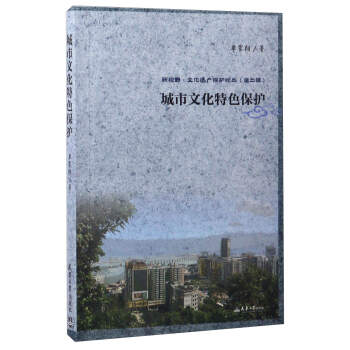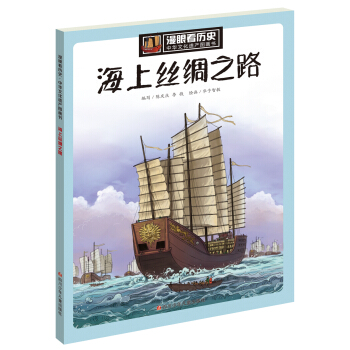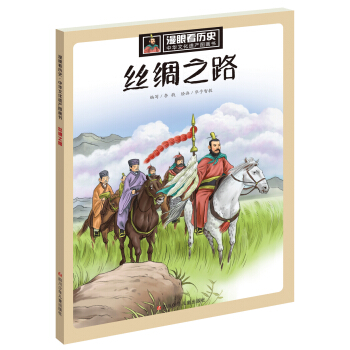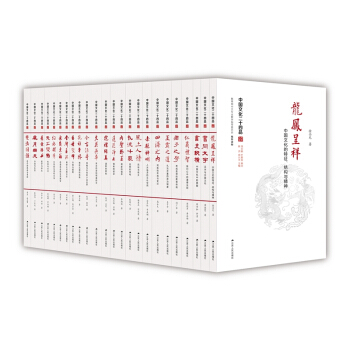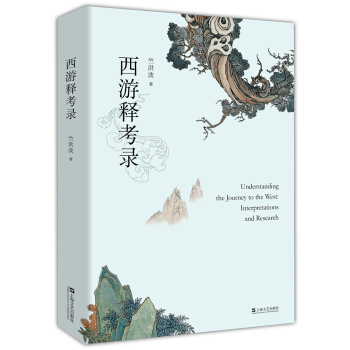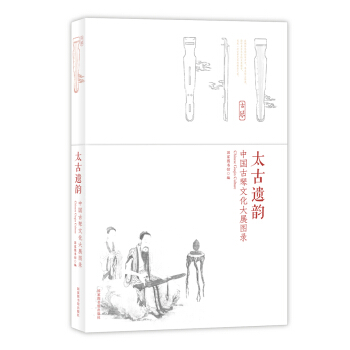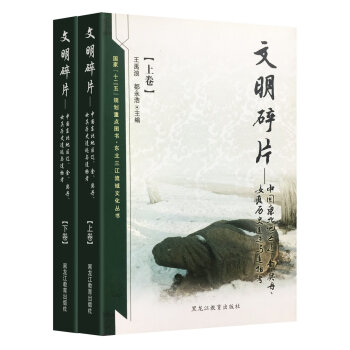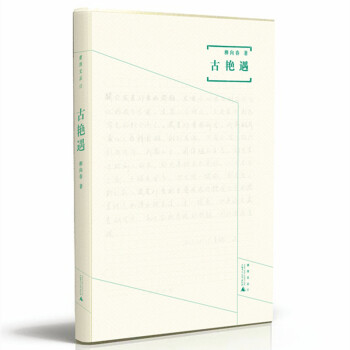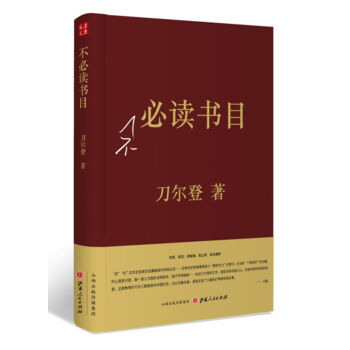

具体描述
产品特色
编辑推荐
小到情与爱,大至义与忠,大河剧所提倡的精神,是坚持,是热血,是勇气,是使命感与担当意识,是全心全意付出而不自知不自得。这当然是剧情的需要,但对于很多观众而言,在生活的不同阶段,他们也被剧中的人物所激励着。无论笑与泪,生活总要向前。
不如,约个周末,一起看大河剧吧!
内容简介
专门关注日系内容的超人气品牌「知日 ZHIJAPAN」 推出《知日》特集第43弹 《知日?一起看大河剧吧!》特集!
日本的大河剧自1963年诞生之初,便着眼于以“人”的角度来展现广阔的历史。
*大河剧的由来,历年大河剧一览,大河剧的主人公,带你了解大河剧讲述的“人”与历史;
*NHK大河剧的制作团队与协作过程,为你揭秘大河剧从选题、编剧到播出、宣传的全过程;
*军事考证、历史考证、服装考证……考证的立足点,就是为大家打开历史兴趣的大门;
*音乐人服部隆之:古典音乐是一切音乐创作的基础;
*《真田丸》《笃姬》《新选组!》《坂上之云》《葵 德川三代》……一起探索名作的魅力;
*题字、美食、读书文化、绘卷、纪行、主题馆,一览那些不可错过的大河剧风景。
将历史与剧完美结合,“有用又有趣”,这便是大河剧极受欢迎的迷人特质。一本《一起看大河剧吧!》,带你走进大河剧的台前幕后,感受日本历史与日本人文精神的内核。
作者简介
撰稿人
静电场朔
毕业于中国传媒大学。自由插画师、设计师、模特,大宇宙酿studio 创始人。Cubecat 块猫原创形象作者。在东京《东京流行通讯》中连载“东京视野”专栏,并长期为各类时尚杂志供稿。
萧西之水
1989 年生,北京人,新锐日本史作家,指文军鉴工作室副主编。热爱日式吐槽,致力于还原不同时代日本人的实际价值观,代表作有《谁说日本没有战国》《第〇次世界大战》。
朱武平
旅日学者,译者,言语学博士,2011 ~ 2015 年旅居马来西亚,从事文化交流及教学工作,现为日本国立千叶大学客座讲师。
鬼君
新闻传播专业出身,戏曲、诗词、影视爱好者,现负笈海外;为“戏知”公众号主编,“尤尼控领域”历史影视板块负责人。
黑骏马
1981 年生,上海人,外企文案、自由撰稿人。日剧爱好者,对大河剧略有研究,平时爱写剧评,品味细腻而真挚的日式情感。
苏枕书
客居京都,喜爱养花种菜,著有《京都古书店风景》《有鹿来》等作品。
李雨潭
现居东京,职业心理咨询师、催眠师、生命状态优化师、日本文学译者。近年来致力于寻找日本美学文化与心理学的交集,在荔枝电台开设心理学频道“东瀛有礼”。
regulars 撰稿人
李长声
旅日作家、日本出版文化史研究专家。曾任日本文学杂志副主编,著有《哈,日本》《日下书》《枕日闲谈》《纸上声》等。
彼得猫(彭永坚)
从佛山、东京、广州到上海,一直生活在外,洞察力属于AB 型。《周末画报》全国创意总监,南方电影论坛、广州书墟发起人,于2009年创办“彼得猫?古本店”。
受访人
丸岛和洋
1977 年生于大阪,历史学家,日本国文学研究资料馆研究部特任助教,研究领域为战国大名论,著有《战国大名武田氏的权力构造》等。2016 年担任大河剧《真田丸》的时代考证专家,并在每集播放后,通过Twitter 为观众做《真田丸》的相关历史解说。
服部隆之
生于1965 年,日本作曲家、编曲家,毕业于法国巴黎国立高等音乐学院和声科,1988 年学成归国,从《梦起之时》开始活跃于日本乐坛,曾担任森高千里、恰克与飞鸟、中森明菜等知名歌手的编曲。担任了《代表取缔役刑事》《华丽一族》《李香兰》《诱拐》《收音机时间》等几十部电视剧、电影、舞台剧的音乐创作,其中《不平凡的勇气》和《HERO》的配乐分别拿下日剧学院奖*佳配乐奖,也奠定了他在日本乐坛的地位。他担纲制作主题曲的《半泽直树》更是以*高42.2% 的收视率和29.07% 的平均收视率,成为平成年代以来单集收视*高的电视剧,配乐被认为是该剧广受好评的重要因素之一。祖父为曾担任日本音乐家协会会长的服部良一,父亲为日本著名音乐人服部克久,17 岁的女儿服部百音也在日本音乐界崭露
头角。
西郡友典
出生于福岛县。大学毕业后,在东京作为音乐人活动。因受到荒木经惟照片的冲击,开始拍摄照片。曾获得第23 届佳能“写真新世纪”摄影大赛优秀奖(荒木经惟选)。
特别鸣谢
名古屋市秀吉清正纪念馆、坂上之云博物馆、松山市立子规纪念博物馆、服部隆之、丸岛和洋、熊谷晃、西郡友典、三谷幸喜、田渊久美子、宫藤官九郎、宫崎葵
内页插图
精彩书评
在众多关于日本的杂志中,有一本做得特别知性、特别有深度。它就像它的名字一样,不是要让年轻人的生活、打扮更像日本人,而是要让华文读者更了解日本,这就是《知日》。——梁文道
日本作为一个经济高度发展的国家,还有很多不同的范畴,可以让我们去推敲、参考,我相信《知日》能够提供这方面的角度,让大家去认识一个全新的日本。——汤祯兆
日本世界屈指可数的、高质量的艺术、文化、音乐,希望《知日》能够将这些信息带给中国的读者。——坂井直树
《知日》几乎收集了华文世界所有“日本通”。如果想分析为什么自己哈日,这是好书。——健吾
这套杂志精选*时尚、*前沿、*有品质的日本话题,让我们深度了解一个不为人知的“非常日本”,每个月买上一本细细读完再坐等下个月特辑的到来已经成为不少人的“日常”。从初读的求知和疑惑到合上书本的恍然,周而复始又豁然开朗——哦!原来这就是日本!It's Japan!——数字尾巴
看知日,了解日本。——西西弗书店
觉得有意思的杂志可以一直出版下去真好。——南京先锋书店
每一期的知日都买了,很喜欢。——网友莫素匆
关于日本,我们有太多不解了。——网友暗蓝色的海
真心喜欢日式杂志的风格,知日已是每期必败了……——网友关山北望
尽管早就听说过这本杂志,……现在拿到纸质版,相见恨晚,爱不释手,主题精致但深度又够,极俱精深的日式研究风格。——网友shan-in-sunshine
目录
特集 一起看大河剧吧!
历年大河剧一览
大河剧中的主人公
一起看大河剧吧!
泱泱大河,里外人生
从0到100:大河剧的制作就是团队协作史
为大家打开历史兴趣的大门,就是考证的立足点
铠甲:武将们的金钟罩
NHK交响乐团:音乐是透明的剧情
服部隆之:古典音乐是一切音乐创作的基础
大河剧的题字:“不严肃”的书道艺术
日渐“晨间剧化”: 变革中的大河剧
从奸臣到忠臣:大河剧中的“石田三成”
坂上之云:为日本近代化而奉献一生的热血男儿们
忠诚VS生存:战国中上层武士价值观
关原之战:日本战国史上最长的一天
漫谈大河剧之英雄与美食
女子世代的争议与魅力
经典台词×大河剧
读书风景×大河剧
纪行×大河剧
屏风与绘卷×大河剧
主题馆×大河剧
字研:大奥/大名/サカヤキ/藩
【别册日和手帖】柏林骑行者的后花园
【regualrs】
photographer 西郡友典:纯粹的灵魂,自由的照片
book 矢茹多闻的书籍设计 2.5次元的游戏
manga 冈崎京子 《River's edge》
magazine 不一样的美食杂志——《RiCE》
俳句 峨眉月当空,朦朦胧胧一片白,满地荞麦花
精彩书摘
将历史教科书无法展现的人物及其故事生动地展现给观众,就是大河剧的使命。而这项伟大使命的具体实现者,就是大河剧制作团队和为大河剧的成功拍摄提供帮助的人们。作为NHK 的名产品之一,大河剧的制作归为NHK 制作局第二制作中心电视剧节目部负责,从策划选题到放送结束,每部大河剧的制作周期为两年。除了数量庞大的演员之外,从统筹全局的制作人到核心的编剧,从各方面的考证专家到剧组制作人员,都是不可或缺的螺丝钉。在两年时间内团队团结协作,有条不紊地完成一部史诗,不得不说是项堪比奇迹的工作。
——《从0到100:大河剧的制作就是团队协作史》
三谷幸喜先生对《真田丸》的期待是“ 想要描绘和之前的解释有所不同的真田”。这对我来说也是一个机会。我会针对历史小说或江户时代的战争小说中夸张的故事重新进行调查,看是否符合已知的史实。还有一种情况是,某些历史虽然相关研究已经有了进展但一直没被重视,我也会重新调查,力求准确无误。
日本人常常会说一句话,“ 事实总是比小说更加离奇”,我希望还原真实而更加离奇的历史。
——丸岛和洋
大河剧主题曲的音乐创作要求非常高,我们们不但得让大家留在这2 分40秒里面不至于厌倦,还得让人听了这段音乐之后产生想要观看这部电视剧的冲动,所以片头曲如果不能有效地表现出剧情的世界观是不行的,作曲家的责任非常重大。
通常为了一部大河剧,我需要写120 首曲目,分4 次创作,每次录音量达30 首。
——《服部隆之:古典音乐是一切音乐创作的基础》
大河剧的主人公通常是历史主流叙事中较有争议的人物,剧本往往从不同于以往的角度对其进行新的诠释。正因为这样,大河剧的编剧们不拘泥于固定的人设,而是留意学术界的进展,这也使剧中人物的形象随着时代的变迁而变化。从早期作品中的井伊直弼、原田甲斐、平将门、柳泽吉保、北条政子、足利尊氏、日野富子,到近年的北条时宗、山内一丰、平清盛、黑田官兵卫等,莫不如是。井伊直弼的屡兴大狱、镇压政敌,被理解为别有苦心、忠于职守;仙台藩内乱当事人原田甲斐,伪君子的形象下是牺牲自家保全主家的忠臣;《新 ?平家物语》中跋扈的平清盛,被视为开展海外贸易、推动日本商业立国的先驱;足利尊氏原本被定性为背叛天子的逆臣,在大河剧中却被解读成迫不得已为结束乱世而背负骂名的武家栋梁??
——《从奸臣到忠臣:大河剧中的“石田三成”》
在大河剧50 多年的播放历程中,许多日本历史上经典的战斗、战役以及战争都有过影视化的重现与演绎,比如武家崛起时的保元之乱、源平合战(《平清盛》《义经》等),近代日本崛起后的日俄战争(《坂上之云》),以及太平洋战争(《山河燃烧》)等。受游戏及收视率等因素的影响,战国时代逐渐成为大河剧选材的主流。说起战国时代著名的战斗、战役、战争,众多大河剧粉丝都能娓娓道来,比如桶狭间合战、本能寺之变、大坂之战等。而在这些当中,最为大河剧粉丝津津乐道的影视化重现,毫无疑问是《葵 德川三代》中的关原之战。
——关原之战:日本战国史上最长的一天
前言/序言
大河剧是了解日本历史与日本人的一个平易近人的窗口。故事发生背景跨越10多个世纪,在历史的大帷幕下,“人”的情感与能量喷薄而出,荡气回肠,直击人心。
战国时代的群雄厮杀、德川幕府的权势与阴谋、近代化路程的艰难探索,大河剧自然是忠于“ 史实” 这个维度的。剧中对于历史情境的还原、细致的考究历来也有口皆碑。花与茶、琴与棋、仪态与语法、衣裳与礼乐,如此等等,演员在这般贴切的环境中演出,本身既完成了与历史的“ 亲密交流”,也使得人们观看剧时更加自然流畅。以史实为基础,戏剧化的改编增加了艺术张力,大河剧准确把握了“ 有用却无趣” 和“ 有趣却无理” 之间的平衡点,“ 有趣又有用”,就是大河剧极受欢迎的迷人特质。
大河剧所讲述的,是“ 人” 的历史。自古英雄为佳话,大河剧却不仅仅局限于描绘诸如织田信长、丰臣秀吉、德川家康等豪杰的对决与兴衰。悲情人物如真田信繁,浪漫情怀如坂本龙马,风华绝代如川上贞奴,忠诚可靠如新选组浪士,腹黑恶女如日野富子,这些人物也是大河剧主角的重要构成。而对于具体人物的描绘,在不同的剧中也有着不同的角度,同时随着考证资料不断充实,人物形象也会随之发生变化。
用户评价
When I first saw 《知日·一起看大河剧吧!》 on the shelf, my immediate thought was, "Finally, something that truly speaks my language!" For years, I've been captivated by the sprawling narratives of Japanese historical dramas, the way they meticulously recreate eras gone by, and the deep dives into the lives of legendary figures. It's not just about the plot; it's about the entire sensory experience – the opulent kimonos, the meticulously crafted castles, the subtle nuances of ancient etiquette. Each episode feels like a meticulously painted scroll, unfurling a chapter of history with an unparalleled depth and artistry. I've always felt that to truly appreciate these dramas, you need more than just a passive viewing experience. You need context, understanding, and a guide who can illuminate the hidden layers of meaning. This book, with its explicit promise to delve into the world of "taiga drama," feels like that missing piece. I'm particularly interested in how it might explore the historical accuracy versus dramatic license, a constant dance that these productions perform. Are they faithful historical records, or are they passionate interpretations designed to resonate with modern audiences? The book's title itself evokes a sense of camaraderie, suggesting an invitation to share in this appreciation, as if we were all gathered around a screen, discussing the intricate details and the profound impact of these epic tales. I'm hoping for insights into the recurring themes, the iconic figures that populate these dramas, and perhaps even the societal and political landscapes that influenced their creation. It’s more than just a guide; it’s an invitation to a deeper conversation about Japan's rich past and its enduring cultural legacy. The sheer potential for learning and engagement is immense, and I'm eager to embark on this literary journey.
评分When I first came across 《知日·一起看大河剧吧!》, it felt like a revelation, a confirmation that a deeply personal passion had found a dedicated champion in print. The world of Japanese "taiga drama" has always held a unique magnetism for me. It's the grand scale, the intricate weaving of personal lives against the backdrop of monumental historical shifts, and the profound respect for detail that draws me in. These aren't just stories; they are meticulously constructed visual chronicles that offer an immersive experience into eras long past. From the fierce battles of the Sengoku period to the elegant rituals of the imperial court, each drama is a testament to Japan's rich and complex history. However, simply watching, while enjoyable, often leaves one with a desire for deeper understanding. I've always wondered about the nuances, the historical interpretations, and the artistic choices that shape these narratives. This book, by its very title, suggests a shared journey, an invitation to explore these epic tales together, with informed guidance. I'm particularly keen to see how it might dissect the storytelling techniques, the character development, and the historical accuracy of these dramas. What challenges do creators face in adapting historical accounts for mass appeal? How do these dramas reflect contemporary societal concerns? The prospect of uncovering these layers of meaning and enriching my appreciation for a genre I hold so dear is incredibly exciting. It promises to be more than just a reader; it's a gateway to a more profound engagement with Japan's past.
评分As someone who has consistently found themselves drawn to the grand narratives and visual splendor of Japanese historical dramas, the appearance of 《知日·一起看大河剧吧!》 felt like a timely and welcome discovery. The term "taiga drama" itself conjures images of epic scope, intricate plotlines spanning generations, and a profound dedication to bringing Japan's rich history to life. These productions, for me, are far more than simple television shows; they are meticulously crafted voyages into the past, offering a unique blend of education and entertainment. The attention to detail in recreating bygone eras – the elaborate kimonos, the imposing castles, the nuanced social etiquette – is a testament to the artistry involved. Yet, I've always believed that to truly appreciate these sagas, one needs more than just the visual feast. There's a depth of historical context, a cultural significance, and a directorial vision that often goes unexamined by the casual viewer. This book, with its inviting title, promises to be that essential guide, fostering a shared appreciation and deeper understanding. I'm particularly eager to explore its insights into the challenges of historical dramatization, the process of character interpretation, and the cultural impact these series have had. How do they navigate the complexities of historical events to create compelling narratives for a modern audience? The prospect of uncovering these layers of meaning and enhancing my viewing experience is incredibly appealing.
评分The moment I saw 《知日·一起看大河剧吧!》, I knew it was destined to become a treasured part of my personal library. For years, the captivating world of Japanese "taiga drama" has held a special place in my heart. These historical epics are, to me, the pinnacle of television storytelling, offering an unparalleled blend of sweeping historical scope and intimate human drama. The meticulous reconstruction of past eras, from the opulence of imperial courts to the stark realities of battlefield life, is always a feast for the eyes and a journey for the mind. I've always been fascinated by the way these series manage to weave together the grand sweep of history with the personal struggles and triumphs of their characters, creating narratives that are both informative and deeply moving. However, I've often found myself wanting to delve deeper, to understand the historical context, the cultural nuances, and the artistic choices that make these productions so compelling. This book, with its wonderfully inclusive title, seems to offer precisely that: an invitation to share in the exploration and appreciation of these remarkable works. I'm particularly excited to see how it might shed light on the process of historical research and dramatization, the portrayal of iconic figures, and the enduring appeal of these stories across generations. It feels like unlocking a new dimension of appreciation for a genre that has already given me so much.
评分The arrival of 《知日·一起看大河剧吧!》 has been met with a quiet thrill, the kind reserved for discovering something truly special that resonates with a deeply held passion. My fascination with Japanese historical dramas, or "taiga drama," is not a fleeting interest but a long-standing appreciation for their unparalleled ability to transport viewers through time. These productions are more than just episodic television; they are meticulously crafted cinematic journeys that breathe life into historical figures and pivotal moments in Japan's past. The sheer dedication to authenticity, from the intricate patterns on a samurai's armor to the refined gestures of a court lady, is what truly sets them apart. I’ve always felt that to fully appreciate the depth and impact of these dramas, a certain level of contextual understanding is crucial. This book, with its evocative title, seems designed to be that essential guide, offering not just information but a shared exploration. I'm particularly eager to discover how it might deconstruct the narrative structures, analyze the portrayal of key historical personalities, and discuss the societal relevance of these stories. Does it offer insights into the research methodologies employed by the production teams? Does it explore the influence of these dramas on popular perceptions of Japanese history? The opportunity to engage with these questions and deepen my understanding of a genre I deeply admire is incredibly compelling. It feels like acquiring a key to unlock even greater appreciation for the artistry and historical significance embedded within each episode.
评分There’s a certain magic in discovering a book that perfectly aligns with a cherished passion, and 《知日·一起看大河剧吧!》 has certainly delivered that for me. My enduring fascination with Japanese historical dramas, or "taiga drama," stems from their remarkable ability to transport viewers through time, immersing them in meticulously recreated past eras. These productions are more than just entertainment; they are cultural narratives that explore the very fabric of Japanese history, from the grand political shifts to the intimate lives of individuals caught within them. The attention to detail in everything from costume design and set decoration to the portrayal of social customs is, frankly, astonishing, and offers a unique window into different periods. However, I've always felt that the true appreciation of these dramas comes from understanding the context in which they are created and the historical accuracy they strive for, or sometimes deliberately deviate from. This book, with its straightforward yet inviting title, promises to be the perfect guide for such an exploration, fostering a shared journey of discovery. I’m particularly keen to learn about the behind-the-scenes aspects, the research that underpins these epic stories, and how they are interpreted and received by audiences. The prospect of gaining a deeper, more informed perspective on a genre I already love is incredibly exciting, and I eagerly anticipate uncovering the insights it holds.
评分这次入手了《知日·一起看大河剧吧!》,收到书的那一刻,就觉得这绝对是一本能让我在忙碌的生活中找到片刻宁静,又能满足我对日本历史文化 Those intriguing narratives that unfold on screen, especially the epic dramas known as "taiga drama," have always held a special allure for me. The sheer scope, the intricate plotlines weaving through generations, the vibrant portrayal of historical figures, and the meticulous attention to detail in costume, set, and social customs – it's a kind of immersive experience that few other forms of media can replicate. I've often found myself so engrossed in these historical sagas that I'd spend hours afterwards, not just researching the historical events themselves, but delving into the lives of the characters, trying to understand the motivations behind their actions, and comparing the dramatic interpretations with factual accounts. It's a fascinating journey of discovery, a way to not only learn about Japan's past but also to gain a deeper appreciation for the enduring human spirit, the struggles and triumphs that have shaped the nation. This particular book, with its focus on "taiga drama," promises to be an invaluable companion on this journey. I'm eager to see how it unpacks the artistry and historical context of these beloved television series, and whether it offers insights into the creative process behind them. The idea of having a guide that helps me appreciate these productions on a more profound level is incredibly exciting. I'm imagining it might shed light on the selection of themes, the casting choices, and even the societal reflections embedded within these narratives. It’s more than just watching a show; it’s about understanding the cultural currents that inspire them and the historical echoes they resonate. I anticipate discovering new favorite dramas through its pages, or perhaps revisiting old ones with a fresh perspective, armed with the knowledge and context that only a dedicated exploration can provide. The anticipation is palpable; it feels like unlocking a treasure trove of Japanese cultural narratives.
评分The publication of 《知日·一起看大河剧吧!》 immediately piqued my interest, resonating with a long-held appreciation for the meticulous and sweeping narratives of Japanese historical dramas. These "taiga dramas" are, in my opinion, a unique cultural phenomenon, offering not just entertainment but a deeply immersive journey into Japan's multifaceted past. The sheer dedication to historical accuracy in costumes, settings, and societal customs is often breathtaking, allowing viewers to feel as though they are stepping directly into another era. Whether it's the dramatic rise and fall of warlords, the societal upheavals of the Meiji Restoration, or the quiet lives of artisans through the ages, these dramas offer a rich tapestry of human experience. However, the true magic often lies beyond the on-screen action; it’s in the historical context, the cultural underpinnings, and the artistic interpretations that elevate these stories. This book, with its welcoming title, seems poised to be an invaluable companion in exploring these depths. I'm especially curious about how it might delve into the selection of subjects for these dramas, the research that goes into their creation, and the ways in which they are received by both domestic and international audiences. Does it offer critical analyses of specific series, or perhaps explore recurring themes and motifs? The opportunity to gain a more nuanced understanding of a genre that has brought so much historical insight and emotional resonance into my life is truly exciting.
评分As a long-time admirer of Japanese culture, particularly its masterful storytelling through historical dramas, encountering 《知日·一起看大河剧吧!》 felt like finding a long-lost friend. The allure of "taiga drama" for me lies in their ambitious scope, their ability to condense decades, sometimes centuries, into compelling narratives, and their dedication to recreating past eras with an almost obsessive level of detail. It’s a phenomenon that transcends mere entertainment; it’s a form of cultural heritage preservation and dissemination. I’ve spent countless hours lost in the lives of Sengoku period warlords, the elegance of the Heian court, and the turbulent Meiji Restoration. Yet, I've always yearned for a deeper understanding, a companion that could illuminate the subtleties, the historical underpinnings, and the artistic choices that make these dramas so powerful. This book, by its very title, promises precisely that – a shared experience, an invitation to delve into the world of these epic productions. I'm particularly interested in how it might address the challenging task of adapting complex historical events and figures for a television format. What are the narrative strategies employed? How do they balance historical fact with dramatic flair to create characters that resonate with audiences today? The prospect of exploring the cultural impact of these dramas, their role in shaping national identity and historical consciousness, is incredibly exciting. I imagine the book will be a treasure trove of information, offering new perspectives on familiar series and perhaps introducing me to gems I haven't yet discovered. It’s about appreciating the artistry, the historical scholarship, and the profound cultural dialogue that these dramas foster.
评分The moment I stumbled upon 《知日·一起看大河剧吧!》, a wave of profound satisfaction washed over me. It's rare to find a publication that so perfectly caters to a niche yet deeply cherished interest. For as long as I can remember, I've been utterly enthralled by the grand tapestry of Japanese history as it's presented through their spectacular "taiga drama" series. These aren't mere television programs; they are meticulously crafted portals into different epochs, offering a vivid, often breathtaking, portrayal of samurai, emperors, artists, and revolutionaries. The attention to detail in every aspect – from the rustle of silk kimonos to the clang of swords, the solemnity of tea ceremonies to the intricate political machinations – is simply astounding. It's an education wrapped in entertainment, a chance to visually immerse oneself in periods that shaped modern Japan. However, I've often felt that to truly grasp the essence of these dramas, one needs more than just the on-screen narrative. There's a rich historical context, a cultural undercurrent, and a creative philosophy that often remains unspoken. This book, with its straightforward yet inviting title, seems poised to fill that void. I'm particularly eager to explore its insights into how these dramas are conceived, the challenges faced by producers and actors in bringing historical figures to life, and the critical reception they receive. Does it offer behind-the-scenes glimpses? Does it analyze the directorial choices and scriptwriting techniques? The prospect of dissecting these narratives with informed commentary, delving into the historical accuracies and the artistic liberties taken, is incredibly appealing. It’s about moving beyond passive consumption to active engagement, fostering a more nuanced and appreciative understanding of these cultural treasures.
评分挺好的,内容很多。质量很好
评分好看好快京东一直好好好好!支京都太实用了!
评分静下心来读一读匠人精神,其实我还知道很多茶道、天妇罗、甚至煮饭的巨匠,下次再讲讲他们就更好了
评分快递速度快,包装比较简陋
评分知日系列 品牌保证 内容丰富
评分知日系列 品牌保证 内容丰富
评分便宜,送货快,买来送给朋友的!
评分一直在阅读,内容丰富,越来越贵。
评分收藏作为了解日本文化的书,休闲读不错,封面很喜欢,放在家里当装饰也挺好玩的哈哈哈哈哈哈哈哈哈
相关图书
本站所有内容均为互联网搜索引擎提供的公开搜索信息,本站不存储任何数据与内容,任何内容与数据均与本站无关,如有需要请联系相关搜索引擎包括但不限于百度,google,bing,sogou 等
© 2025 book.coffeedeals.club All Rights Reserved. 静流书站 版权所有

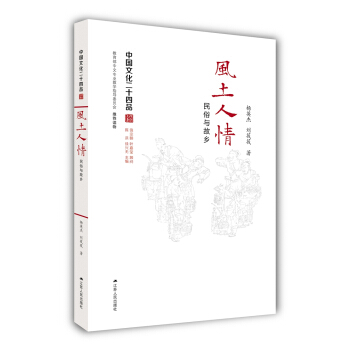
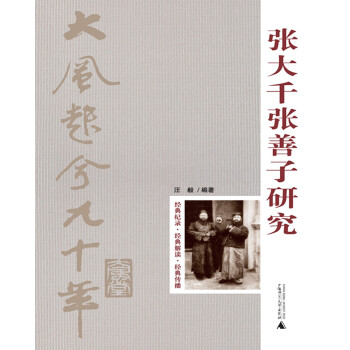
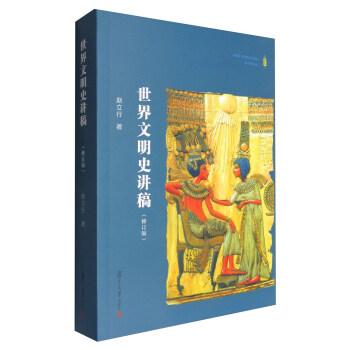
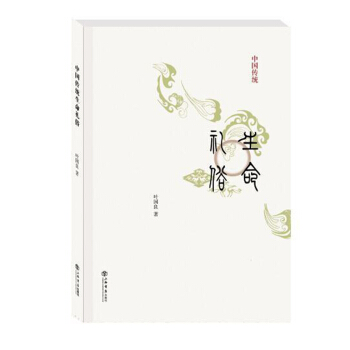
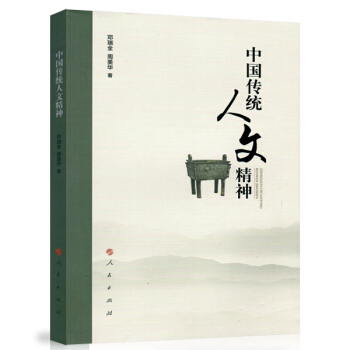
![体验世界文化之旅阅读文库:德国 [Germany-Culture Smart!] pdf epub mobi 电子书 下载](https://pic.windowsfront.com/12159442/58d87e53N0747681d.jpg)
![体验世界文化之旅阅读文库:亚美尼亚 [Armenia-Culture Smart!] pdf epub mobi 电子书 下载](https://pic.windowsfront.com/12159452/58d87e53Nb37c42a3.jpg)
